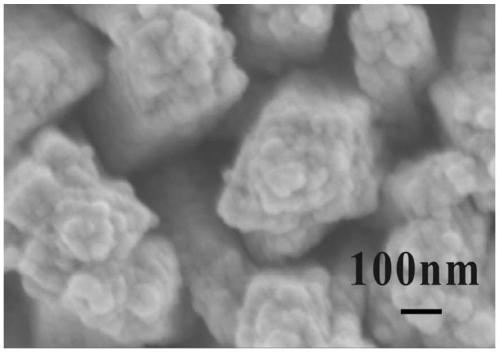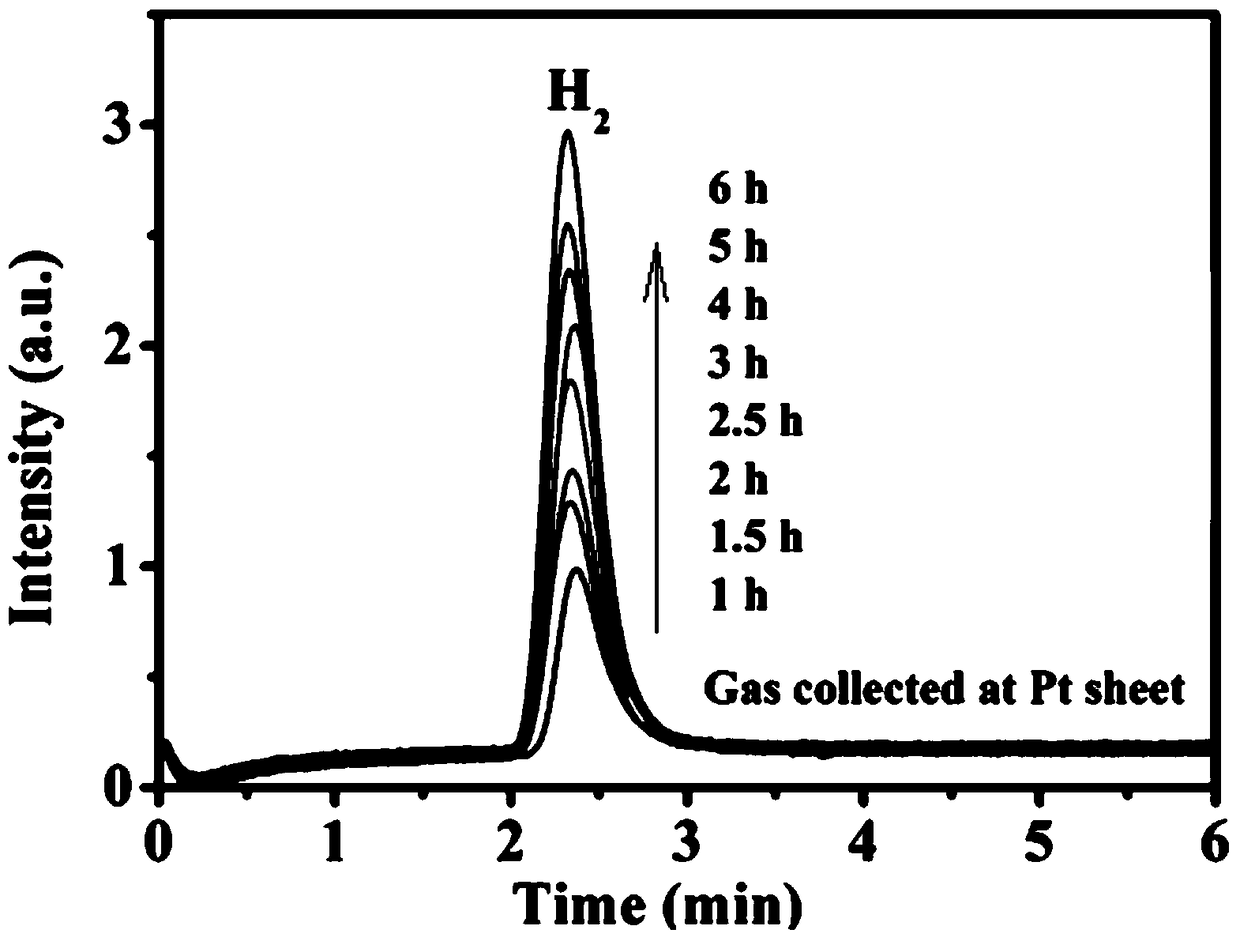Cadmium Selenide Quantum Dots Sensitized Titanium Dioxide Nanorod Photoelectrode and Its Preparation and Application
A quantum dot sensitization, titanium dioxide technology, applied in electrodes, electrolytic components, energy input and other directions, can solve the problems of limited application and poor photostability, achieve large specific surface area, increase activity, and improve the effect of easy photocorrosion
- Summary
- Abstract
- Description
- Claims
- Application Information
AI Technical Summary
Problems solved by technology
Method used
Image
Examples
Embodiment 1
[0031] A preparation method of cadmium selenide quantum dot sensitized titanium dioxide nanorod photoelectrode, comprising the following steps:
[0032] (1) At room temperature, add 0.35mL tetrabutyl titanate (99%) dropwise to 15mL6mol / L HCl solution, and after stirring vigorously for 30min, transfer the above mixed solution to 25mL PTFE-lined stainless steel In the high-pressure reactor, the surface-cleaned FTO electrode was then placed in the mixed solution, and its conductive surface was placed downward; the reaction was continued at a constant temperature of 150 °C for 4 hours; when it was cooled to room temperature, the surface of the sample electrode was washed with twice distilled water to prepare TiO2 nanorod substrate electrodes were obtained.
[0033] (2) Place the titanium dioxide nanorod base electrode in step (1) in a newly prepared 8ml0.1mol / LNa 2 SeSO 3 and the same volume of 0.02mol / LCd(NO 3 ) 2 And 0.5mol / L sodium citrate mixed solution. Among them, Na 2 S...
Embodiment 2
[0035] At room temperature, the traditional three-electrode system was used to perform photoelectrochemical performance tests on a CHI660c electrochemical workstation. The cadmium selenide quantum dot-sensitized titanium dioxide nanorod photoelectrode prepared in Example 1 was used as the photoanode, and the platinum sheet was used as the cathode. A calomel electrode (SCE) was used as a reference electrode. In the 0.5mol / L KOH electrolyte solution containing 0.1mol / L glucose, the ampere i-t curve test was carried out on the cadmium selenide quantum dot-sensitized titanium dioxide nanorod photoelectrode. Compared to pure water oxidation (0.01mA / cm 2 ), the biomass derivative glucose is more likely to undergo oxidation reaction on the surface of the photoelectrode, thereby increasing the photocurrent density value of the sample electrode (0.07mA / cm 2 ).
Embodiment 3
[0037] In a sealed gas circulation system equipped with a self-made three-electrode reactor and a vacuum circuit, the cadmium selenide quantum dot-sensitized titanium dioxide nanorod photoelectrode prepared in Example 1 is used as the photoanode, the platinum sheet is used as the cathode and the saturated calomel electrode (SCE) As a reference electrode, the electrolyte solution is: 0.5mol / L KOH electrolyte solution containing 0.1mol / L glucose. A 300W short-arc Xe lamp was equipped with a visible light filter as a visible light source and a -0.3V (vs. SCE) bias was applied at the Pt cathode. Finally, the collected gas was qualitatively and quantitatively determined by on-line gas chromatography (GC) equipped with a thermal conductivity sensor (TCD). Such as figure 2 as shown ( figure 2 , the curves are 1h, 1.5h, 2h, 2.5h, 3h, 4h, 5h, 6h from bottom to top), and the hydrogen production at the Pt cathode shows a gradually increasing trend with the increase of reaction time. ...
PUM
 Login to View More
Login to View More Abstract
Description
Claims
Application Information
 Login to View More
Login to View More - R&D
- Intellectual Property
- Life Sciences
- Materials
- Tech Scout
- Unparalleled Data Quality
- Higher Quality Content
- 60% Fewer Hallucinations
Browse by: Latest US Patents, China's latest patents, Technical Efficacy Thesaurus, Application Domain, Technology Topic, Popular Technical Reports.
© 2025 PatSnap. All rights reserved.Legal|Privacy policy|Modern Slavery Act Transparency Statement|Sitemap|About US| Contact US: help@patsnap.com


